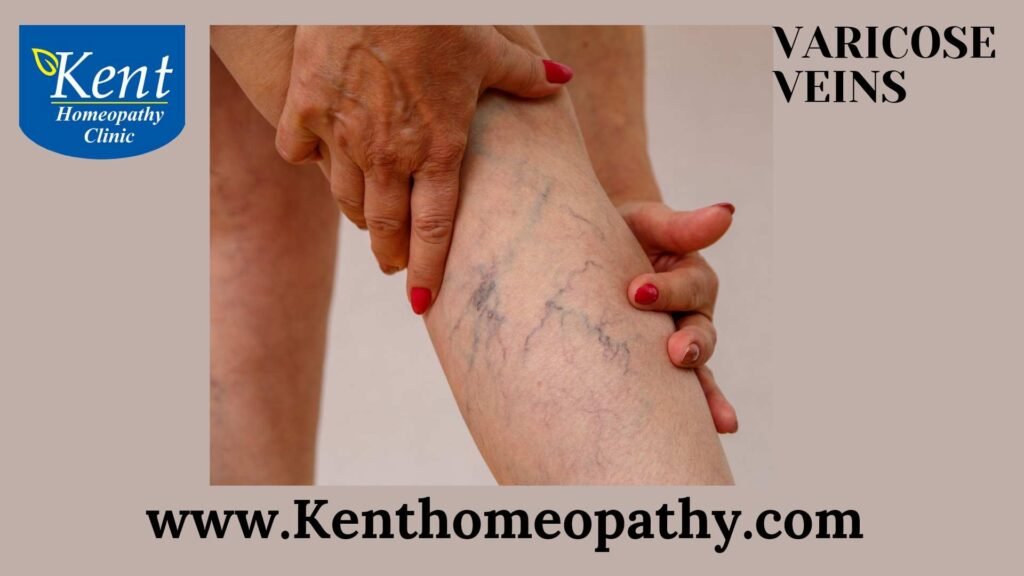Varicose veins

Varicose Veins: Unraveling Symptoms, Causes, and Types
Varicose veins are enlarged, twisted veins that often appear blue or dark purple. They usually occur in the legs and are a common condition, affecting many people, especially as they age. Understanding the symptoms, causes, and types of varicose veins is essential for proper management and prevention of complications.
Symptoms:
- Visible, Bulging Veins:
– The primary visual symptom of varicose veins is the presence of swollen, bulging veins that are easily visible beneath the skin. They may appear twisted or rope-like.
- Discoloration of Skin:
– Over time, varicose veins can cause the skin around them to become discolored. This can result in a reddish or brownish appearance, indicating potential skin changes.
- Aching or Pain:
– Some individuals with varicose veins experience aching or pain in the affected area, especially after prolonged periods of standing or sitting. The pain may be described as throbbing or cramping.
- Heaviness or Fatigue:
– Many people with varicose veins report a sensation of heaviness or fatigue in the legs. This feeling is often more pronounced at the end of the day.
- Itching or Burning:
– Varicose veins can cause itching or a burning sensation in the skin overlying the affected veins. Scratching may lead to further complications.
- Swelling:
– Swelling, known as edema, can occur around the ankles and lower legs due to poor circulation associated with varicose veins.
- Restless Legs:
– Some individuals with varicose veins experience restless legs syndrome, characterized by an uncontrollable urge to move the legs, especially when at rest.
Causes:
- Faulty Valves in Veins:
– The primary cause of varicose veins is the malfunctioning of valves within the veins. Veins have one-way valves that help blood flow upward toward the heart. When these valves weaken or become damaged, blood can pool in the veins, leading to enlargement and twisting.
- Genetics:
– There is a strong genetic component to the development of varicose veins. If your parents or other family members have had varicose veins, you may be more prone to developing them.
- Age:
– Aging is a factor in the development of varicose veins. As people get older, the veins can lose elasticity, and the valves may become less efficient.
- Gender:
– Women are more likely to develop varicose veins than men. Hormonal changes associated with pregnancy, menstruation, and menopause can contribute to the development of varicose veins.
- Pregnancy:
– The increased volume of blood during pregnancy, combined with the pressure exerted by the growing uterus on pelvic veins, can contribute to the development of varicose veins.
- Obesity:
– Excess body weight places additional pressure on the veins, especially in the lower extremities, increasing the risk of varicose veins.
- Prolonged Standing or Sitting:
– Jobs or lifestyles that involve long periods of standing or sitting can impede blood circulation, contributing to the development of varicose veins.
Types:
- Primary Varicose Veins:
– Primary varicose veins refer to veins that develop independently without an underlying medical condition. They are often associated with genetic factors and aging.
- Secondary Varicose Veins:
– Secondary varicose veins are a result of an underlying condition, such as deep vein thrombosis (DVT) or pelvic vein obstruction. These conditions can affect the normal flow of blood in the veins.
- Trunk Varicose Veins:
– Trunk varicose veins involve the large veins near the surface of the skin, such as the great saphenous vein. These veins are often visible and may cause symptoms like pain and swelling.
- Reticular Varicose Veins:
– Reticular varicose veins are smaller, bluish veins located closer to the surface of the skin. They may appear as a network of veins and are often associated with cosmetic concerns.
- Telangiectasia (Spider Veins):
– Telangiectasia, commonly known as spider veins, are tiny, dilated blood vessels that appear close to the skin’s surface. They are often red or blue in color and can be a cosmetic concern.
- Pelvic Congestion Syndrome:
– Pelvic congestion syndrome involves varicose veins in the pelvic region. It can cause pelvic pain, especially in women, and may be associated with conditions like chronic pelvic pain and ovarian vein reflux.
Contact to know more
Contact
Timings
Monday to Saturday:
11:00 AM to 02:30 PM
06:30 PM to 09:00 PM
